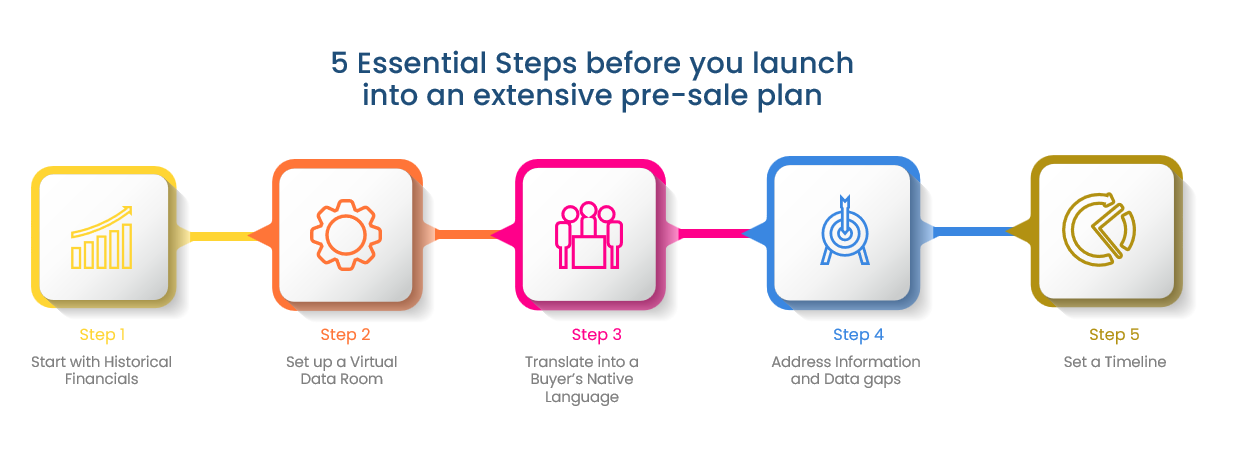Mergers and acquisitions (M&A) are complex endeavors that require meticulous planning, strategic foresight, and, above all, comprehensive data. In the contemporary business landscape, where data drives decisions, understanding what information is crucial to the M&A process can significantly influence the outcome. Therefore, the first step in any successful M&A transaction is Data.
This article will explore the critical aspects of data in M&A, focusing on identifying the right data, understanding customer and market insights, the role of operational metrics, and the broader scope of data beyond financials.

Identifying the Right Data
The first step in any successful M&A transaction is identifying and preparing the right data. Sellers often wonder what data buyers need to evaluate the deal and decide whether to make an offer.
Financial Data
The financials are at the core of any M&A deal. Buyers need accurate, up-to-date financial statements that reflect the company’s health. These include income statements, balance sheets, cash flow statements, and detailed notes on financial practices. However, financial numbers alone are not sufficient.
Operational Data
Operational data, such as supply chain logistics, inventory levels, and production processes, provide buyers with insights into operations’ efficiency and scalability. Understanding these metrics helps buyers assess potential synergies and integration challenges.
Legal and Compliance Data
Buyers also require data related to legal and regulatory compliance. This includes information on outstanding legal issues, intellectual property rights, and compliance with industry regulations. Ensuring that this data is thorough and accurate can prevent potential deal-breakers.
Employee and Organizational Data
Employee data, such as organizational structure, compensation plans, and workforce demographics, is critical. This data helps buyers understand the human capital and cultural aspects of the company, which are essential for integration planning.
Customer and Market Insights: What Buyers Need to Know
Understanding the market position and customer base of the target company is crucial for buyers. This data goes beyond financials and provides insights into future growth potential and competitive positioning.
Customer Demographics and Behavior
Buyers need detailed data on customer demographics, buying behavior, and preferences. This information helps assess market penetration and identify opportunities for cross-selling and up-selling.
Market Trends and Competitive Landscape
Data on market trends and the competitive landscape provides context for the target company’s performance. Buyers need to understand the industry dynamics, potential disruptors, and the target’s competitive advantages.
Customer Satisfaction and Loyalty
Metrics related to customer satisfaction and loyalty, such as Net Promoter Scores (NPS) and customer retention rates, are also vital. These metrics indicate the strength of customer relationships and potential areas for improvement.
The Role of Operational Metrics in M&A
Operational metrics play a significant role in evaluating the efficiency and effectiveness of the target company’s operations. These metrics help buyers identify potential synergies and areas where efficiencies can be gained post-merger.
Productivity Metrics
Productivity metrics, such as output per employee and process cycle times, provide insights into a company’s operational efficiency. High productivity can indicate well-optimized processes, while lower productivity might suggest opportunities for improvement.
Quality Metrics
Quality metrics, including defect rates and customer complaint frequencies, help assess the effectiveness of quality control processes. These metrics are essential for industries where product quality directly impacts customer satisfaction and brand reputation.
Financial Health Metrics
In addition to traditional financial statements, metrics such as working capital turnover, days sales outstanding (DSO), and days payable outstanding (DPO) provide deeper insights into the financial health and operational efficiency of the company.
Understanding the Scope: What Data Goes Beyond Financials
In today’s data-driven world, M&A decisions require more than just financial data. Understanding the broader scope of data can provide buyers with a comprehensive view of the target company’s potential and risks.
Technological Capabilities
Data on technological capabilities, including the state of IT infrastructure, software systems, and innovation pipelines, is crucial. This information helps buyers assess the technological compatibility and potential for future innovation.
Environmental, Social, and Governance (ESG) Data
ESG data is becoming increasingly important in M&A. Buyers need to understand the target’s environmental impact, social responsibility initiatives, and governance practices. This data not only influences the deal’s attractiveness but also impacts post-merger integration and long-term sustainability.
Cultural Compatibility
Cultural compatibility data, including company values, leadership styles, and employee engagement levels, is essential for successful integration. Understanding cultural differences can help mitigate integration risks and ensure a smoother transition.
60% of Executives Believe Better Data Could Improve M&A Outcomes
Data quality and accessibility can significantly impact M&A outcomes. A study by Bain & Company found that 60% of executives believe that better data could improve M&A outcomes. This underscores the importance of investing in robust data collection and analysis processes.
Data Integration and Analytics
Advanced data integration and analytics tools can help buyers and sellers make more informed decisions. By leveraging big data and predictive analytics, companies can uncover insights that traditional methods might miss.
Continuous Improvement
Companies that engage in frequent M&A activities, often referred to as “Mountain Climbers,” have shown that continuous improvement in data practices leads to better outcomes. These companies systematically refine their data collection and analysis methods, leading to more successful deals.
Strategic Use of Data
Strategically using data throughout the M&A process—from initial evaluation to post-merger integration—ensures that decisions are based on comprehensive and accurate information. This strategic use of data can significantly enhance the likelihood of M&A success.
In conclusion, data is indeed king in the realm of M&A. Identifying the right data, understanding customer and market insights, leveraging operational metrics, and recognizing the broader scope of data beyond financials are critical steps in the M&A process.
As the landscape of M&A continues to evolve, companies that master the art of data-driven decision-making will likely lead the pack in achieving successful mergers and acquisitions.
Don’t Know Where to Start?
If you’re unsure where to begin with your M&A journey, please fill in the form by clicking the button below:



